TRADITIONAL DRESS OF GARHWAL
Uttarakhand is home to Garhwalis and Kumaonis depending on which part of Uttarakhand they belong to. It has a rich culture of which, music and dance are an integral part. Various languages are spoken here like Garhwali, Kumaoni, Bhoti and even Hindi. Silver and gold jewellery is a significant part of traditional Uttarakhand attire. If you visit Uttarakhand, you will find women wearing gold kundal (earrings) and often having multiple piercings in their ears. Uttarakhand inhabits people from different ethnic backgrounds like Rajputs, Brahmins and tribal population like Tharu, Jaunsari, Bhotia, among others. Therefore the traditional attires do have a lot of variation.
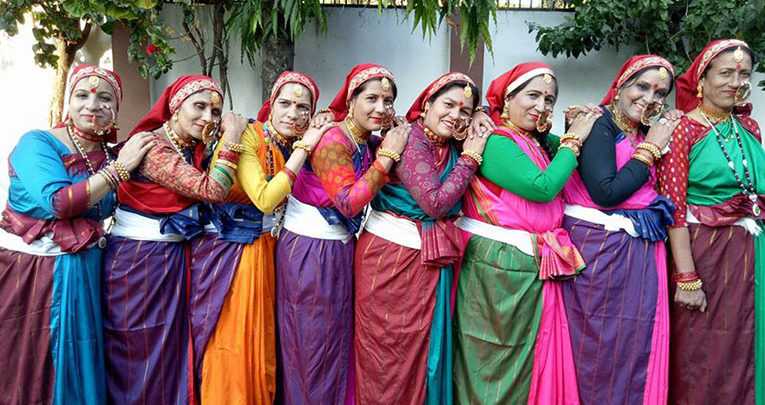 |
| GARHWAL'S TRADITIONAL DRESS |
Garhwali Traditional Dresses
Women's Traditional Dresses
In the Garhwal region of this Northern state, women usually wear sari tied in a particular way, the pallu going from the front and knotted on the shoulder, with a waistband made of cloth. This is considered convenient for women, as it makes it easier to carry food and does not interfere with their work on the fields. Earlier, the sari was worn with a full sleeves Angra (blouse) with buttons made from silver, to protect the women from the cold. They also don a headscarf scarf to protect their hair from damage and to carry the harvest. A married woman was supposed to wear hansuli (silver ornament) worn around the neck, guloband (resembles the contemporary choker), black beads and silver necklace called chareu, silver payal, silver necklace, silver dhagula (bracelet) and bichuye (toe rings). Sindoor along with bindi was also mandatory for a married woman. Even today, a Gulaband is a distinct feature of a married woman. It is designed on a maroon or blue band with gold square pieces arranged on it.
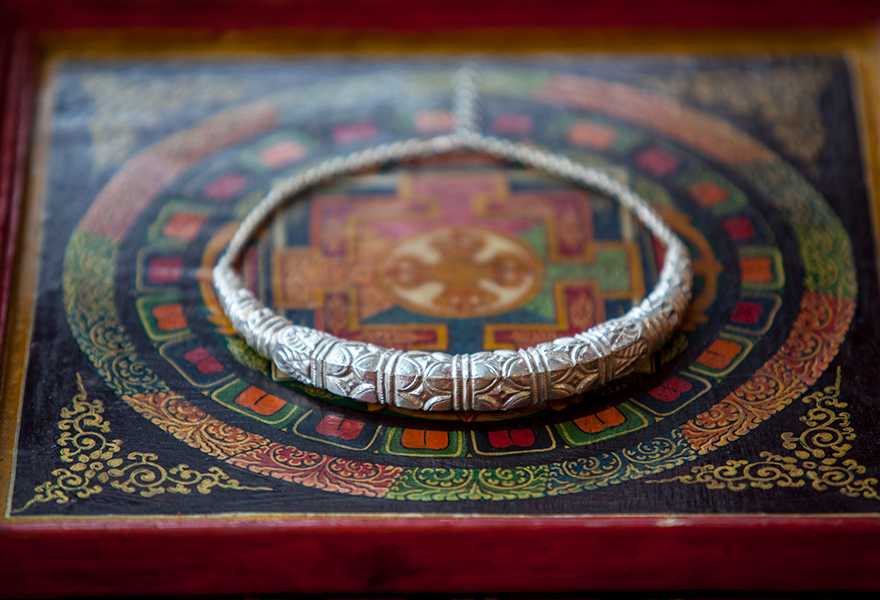 |
| HANSULI |
Hansuli
A woman wearing a gold bulaq on her nose. Traditionally, a newly married woman was expected to wear a big gold septum ring called bulaq. It was given as a dowry by the bride's family. Weddings are a significant event in this community. The bride dons a red ghaghra with a big nath (nose ring), maang teeka, bulaq, guloband, kamar bandh (silver) among others, all made from gold.Men's Traditional Attire
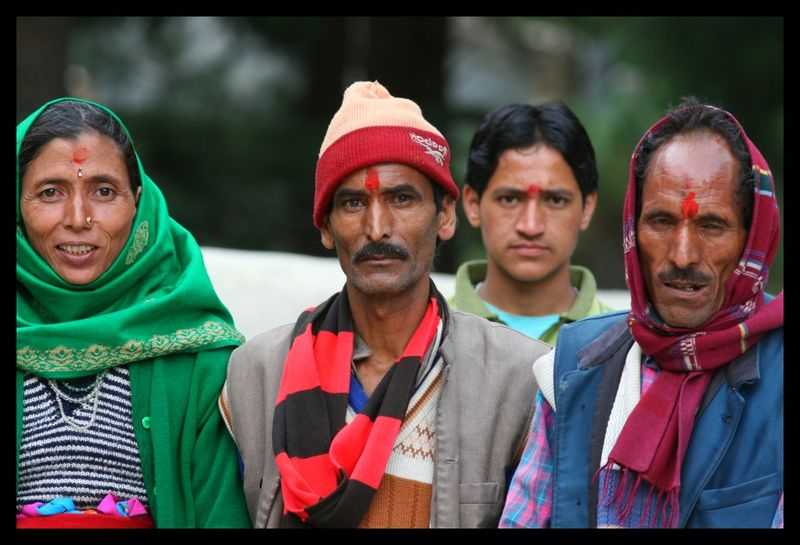 Garhwali men usually wear kurta and pyjama or kurta and churidar, depending on their age. This is the most common attire in the community. This is paired with a topi by the young or pagadi by the older men to protect themselves from the cold. A lot of men also started wearing suits after the influence of the British. The fabric used for clothes differs according to the region's weather conditions, wool in colder regions and cotton in warmer regions.
Garhwali men usually wear kurta and pyjama or kurta and churidar, depending on their age. This is the most common attire in the community. This is paired with a topi by the young or pagadi by the older men to protect themselves from the cold. A lot of men also started wearing suits after the influence of the British. The fabric used for clothes differs according to the region's weather conditions, wool in colder regions and cotton in warmer regions.During weddings, a yellow coloured dhoti and kurta are still the preferred attire for the groom.
Men used to travel distances on foot, and as a way to protect themselves from theft, they carried their silver coins inside a pouch which was tied around their waist. This was hidden from view as it was worn inside their clothes.
Kumaoni Traditional Dresses
Women's Traditional Attire
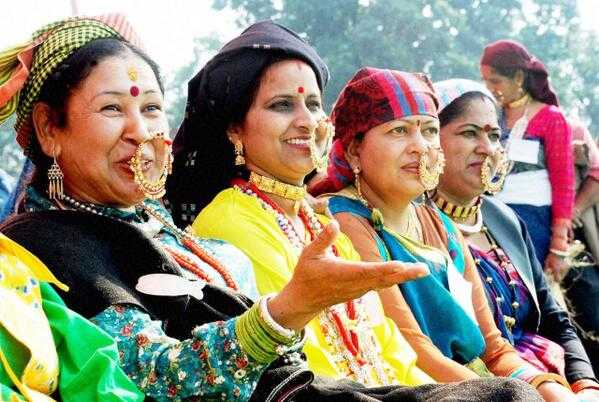 The women in the Kumaon region of Uttarakhand can usually be found wearing a ghagra along with a kameez (shirt) as a blouse. This closely resembles the attire worn by many Rajasthani women. Kumaoni women also wear pichoras, a type of garment common during weddings and ceremonies. Traditionally this was dyed and made at home and was yellow. Even today, women don this traditional pichora on their wedding day.
The women in the Kumaon region of Uttarakhand can usually be found wearing a ghagra along with a kameez (shirt) as a blouse. This closely resembles the attire worn by many Rajasthani women. Kumaoni women also wear pichoras, a type of garment common during weddings and ceremonies. Traditionally this was dyed and made at home and was yellow. Even today, women don this traditional pichora on their wedding day.In Kumaon region, married women wear big naths made from gold covering their entire cheek, hansuli, black beaded necklace or chareu, bichuye (toe rings) made from silver, and sindoor. These were considered mandatory. A woman adorned in the traditional jewellery (Pithoragarh)
Men's Traditional Attire
The regular clothes of the men of Kumaon region resemble that of Garhwali. They too wear kurta and pyjama along with a turban or topi. However, they can be found wearing jewellery on their necks or hands. Something which is specific to the Kumaon region.Traditional Attire of the Tribal Community
Uttarakhand is home to mainly five tribes as per the 2001 Census, which are Tharu, Jannsari, Buksa, Bhotia, and Raji. These mostly reside in rural areas except the Bhutia tribe (25.8%) which is also quite prominent in urban areas. Majority of the tribal population is concentrated in the Pithoragarh district and Udham Singh Nagar in Kumaon division and Dehradun and Chamoli district of Garhwal division.Jaunsaris
Jaunsaris claim themselves to be the descendants of Pandavas of Mahabharat. They have a distinct style of clothing which is very colourful and involves a lot of jewellery, making them stand apart from their Garhwali neighbours. Even the men wear jewellery like earrings, kadas, necklaces, etc. along with a traditional cap called digwa made from woollen cloth. Women wear a ghagra, a woollen coat, and dhantu (scarf). During festivals, they wear Thalka or Lohiya, which is a long coat.Bhotia
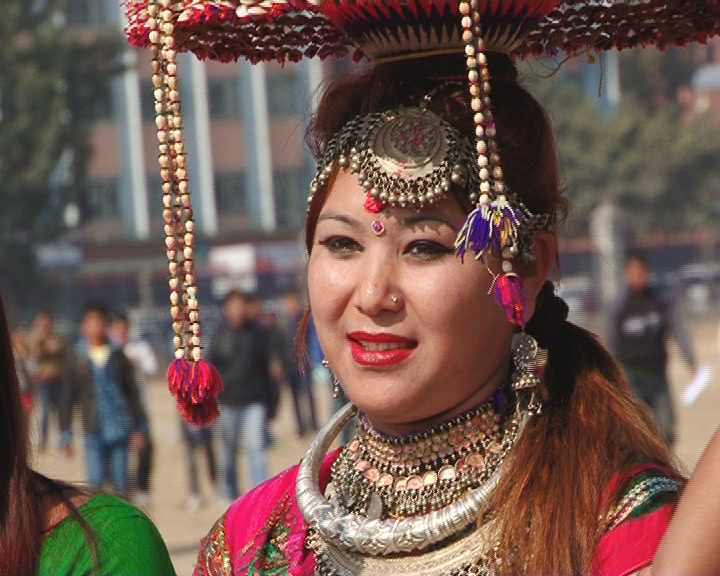 The Bhotia is an agricultural cum pastoral community of Mongoloid ethnicity. They reside in the higher altitude of the state where the climate is frigid. They weave woollen yarn and stitch their woollen clothes. The traditional dress of the women comprises of a skirt, shirt, waistcoat, and a coat. Their necks, ears and nose are usually adorned with beads, rings, and nose rings made of gold or silver. The men typically wear trousers and over it a loose gown tied around the waist with a woollen cloth called patta and a woollen cap.
The Bhotia is an agricultural cum pastoral community of Mongoloid ethnicity. They reside in the higher altitude of the state where the climate is frigid. They weave woollen yarn and stitch their woollen clothes. The traditional dress of the women comprises of a skirt, shirt, waistcoat, and a coat. Their necks, ears and nose are usually adorned with beads, rings, and nose rings made of gold or silver. The men typically wear trousers and over it a loose gown tied around the waist with a woollen cloth called patta and a woollen cap. The Raji tribe is the most underdeveloped among the five mainly living in the woods.
With the onset of westernisation and modernisation, a lot of changes have taken place in the clothing patterns of the people of Uttarakhand.
For the women of Uttarakhand, jewellery, be it gold or silver has been a distinct part of their traditional clothing. Earlier, loads of jewellery including everything from the neck pieces to toe rings were worn on a regular basis. This has decreased over time. Still, on occasions like weddings, women don such traditional attires and jewellery.
While for men, a lot of their clothing patterns have remained the same. If one travels to Uttarakhand, a lot of people of the older generation can be found wearing traditional clothing. These are still quite common among people of the rural region. Although, the most perceivable difference between then and now is the amount of jewellery; which has dramatically decreased over time.
For the women of Uttarakhand, jewellery, be it gold or silver has been a distinct part of their traditional clothing. Earlier, loads of jewellery including everything from the neck pieces to toe rings were worn on a regular basis. This has decreased over time. Still, on occasions like weddings, women don such traditional attires and jewellery.
While for men, a lot of their clothing patterns have remained the same. If one travels to Uttarakhand, a lot of people of the older generation can be found wearing traditional clothing. These are still quite common among people of the rural region. Although, the most perceivable difference between then and now is the amount of jewellery; which has dramatically decreased over time.
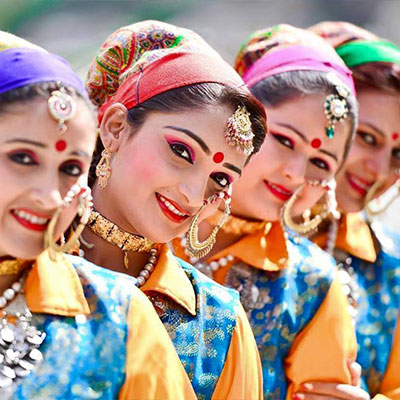 |
| GARHWALI GIRLS |
Comments
Post a Comment